
Beginner’s Guide to Home Yoga Practice
Theme: Beginner’s Guide to Home Yoga Practice. Start where you are, with what you have, and build a calm, consistent routine that fits real life. This welcoming guide offers simple steps, gentle structure, and honest encouragement so your home practice feels safe, doable, and genuinely nourishing. Subscribe for fresh sequences and share your wins with our community.
Create Your Calm: Setting Up a Home Yoga Space
Choose a spot with decent light, steady airflow, and minimal interruptions. Roll out your mat perpendicular to distractions, like doorways or screens. Keep your phone on airplane mode. Tell your household about your practice window, and invite them to protect your quiet time with a shared calendar note.
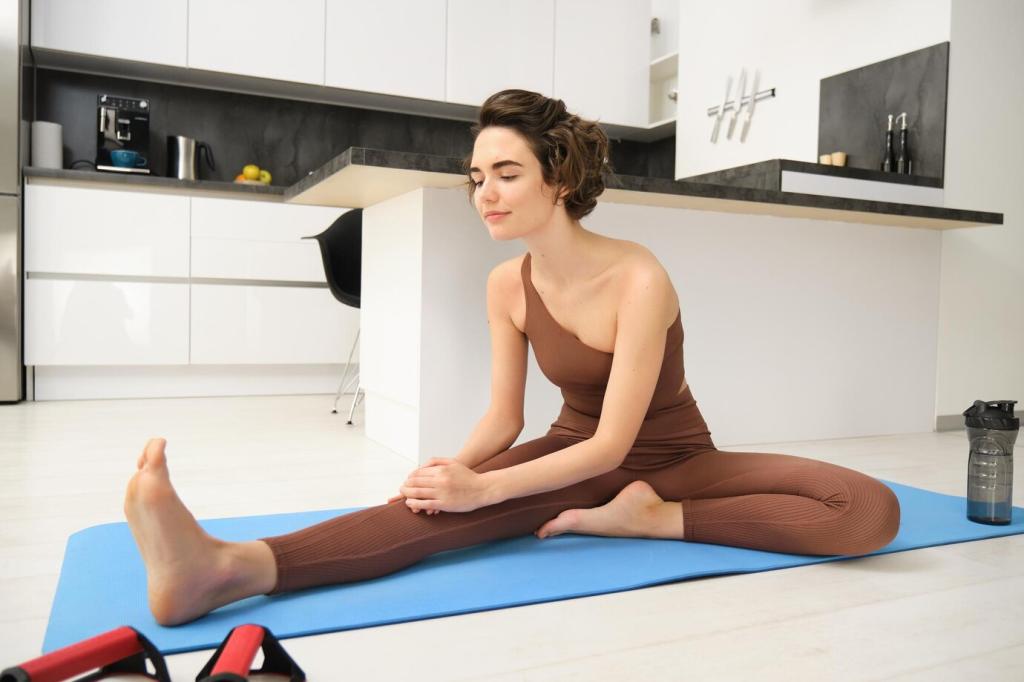
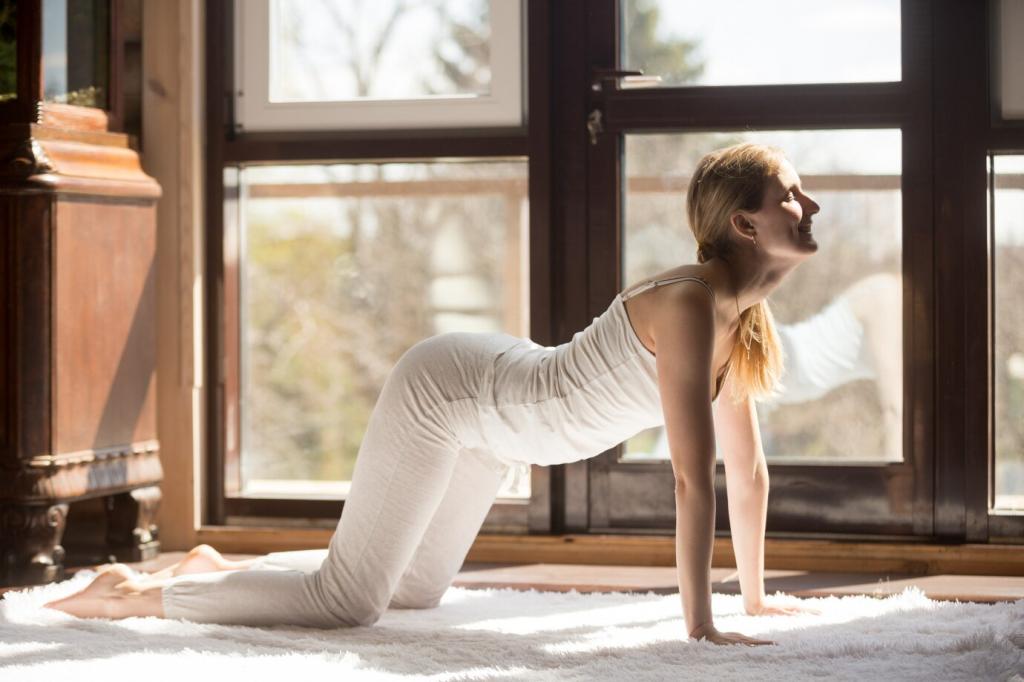
Create Your Calm: Setting Up a Home Yoga Space
Start with one mat, two sturdy books as blocks, and a folded towel for a strap or cushion. A blanket supports knees and seated poses. A chair becomes a balance ally. Keep props visible in a small basket so set-up takes seconds, not minutes—reducing friction and boosting consistency every day.
Breath and Alignment: The Foundations Every Beginner Needs
Sit comfortably, lengthen your spine, and inhale through the nose for four counts, exhale for four. Let the belly move first, then ribs, then chest. Keep the breath quiet and smooth. If thoughts wander, gently return attention to breathing, like guiding a friendly puppy home without criticism.
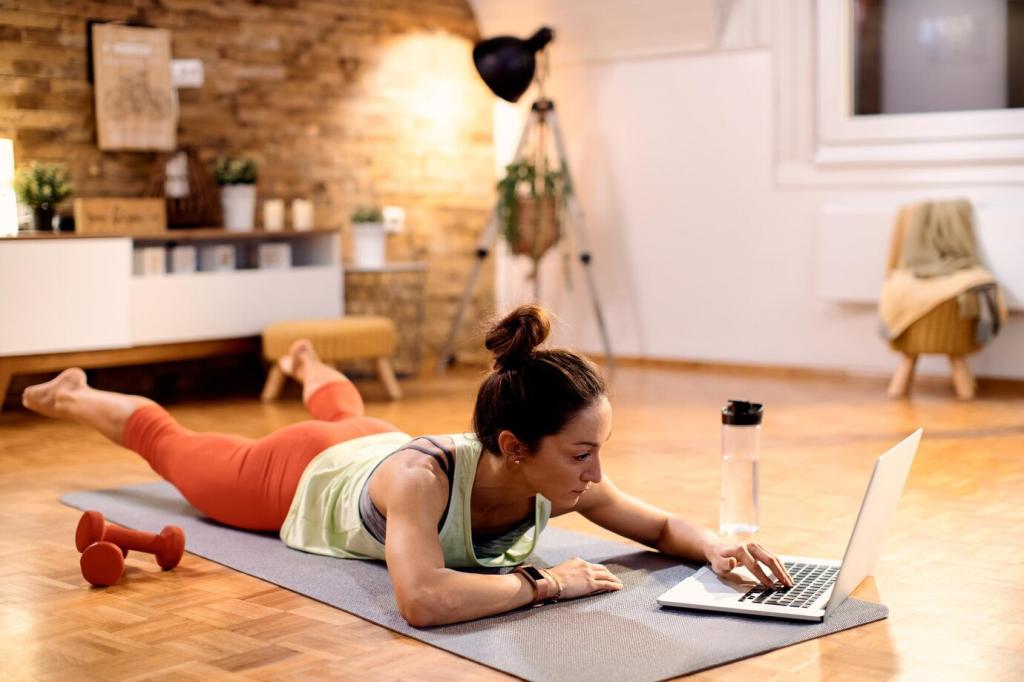
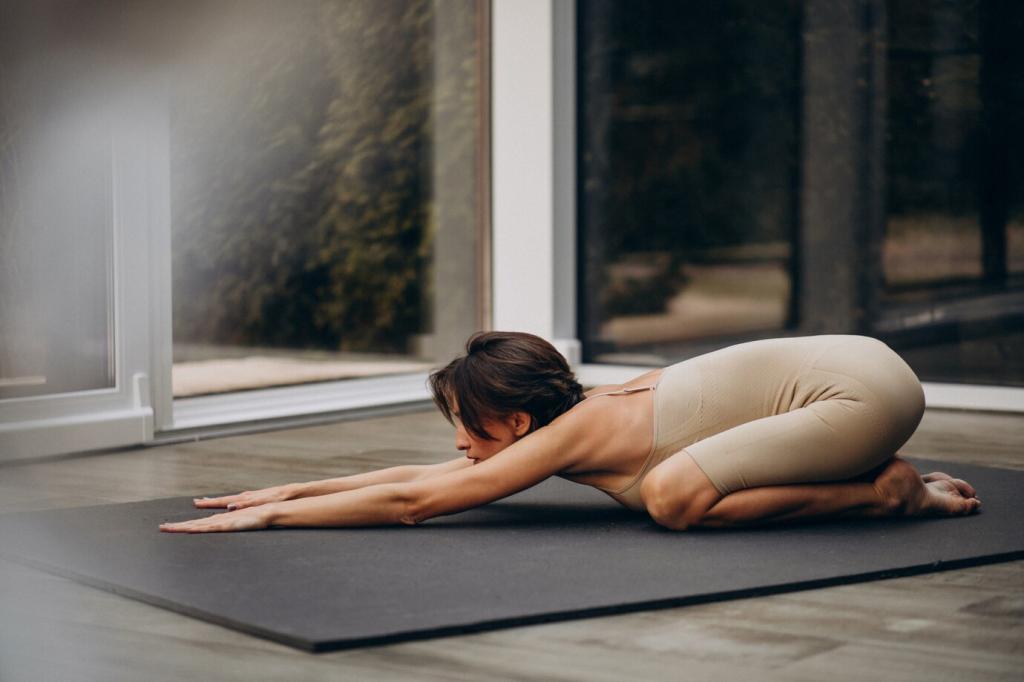
Breath and Alignment: The Foundations Every Beginner Needs
Stand with feet hip-width, press through heels and big toes, lift the kneecaps gently, and lengthen your tailbone. Soften ribs, broaden collarbones, and stack ears over shoulders. Feel the floor push you upward. This simple alignment carries into lunges, forward folds, and balance poses, reducing strain and increasing stability significantly.
Your First Week Plan: Simple, Repeatable, Kind
01
Days 1–2: Mobility and grounding
Begin with three minutes of breathing, then Cat–Cow, gentle hip circles, and a short standing flow: Mountain, Half Lift, Fold, and easy Lunges. Finish with a supported Child’s Pose. Keep the session under fifteen minutes to lower resistance. Share how your body felt after day two—light, grounded, or pleasantly warm.
02
Days 3–4: Strength and stability
Repeat your warm-up, then add Chair Pose against a wall, a slow Plank on knees, and Warrior II with short holds. Balance at the wall in Tree Pose to train focus. End with a seated twist. Note one improvement, like smoother breath or steadier feet. Celebrate it in your journal or comments.
03
Days 5–7: Rest, stretch, and reflect
Make one day a true rest. On the other two, explore longer stretches: Low Lunge, Reclined Figure Four, and Legs Up the Wall. Add a five-minute body scan. Ask yourself what felt supportive, not perfect. If you want a printable version of this plan, subscribe—new sequences arrive each Monday morning.

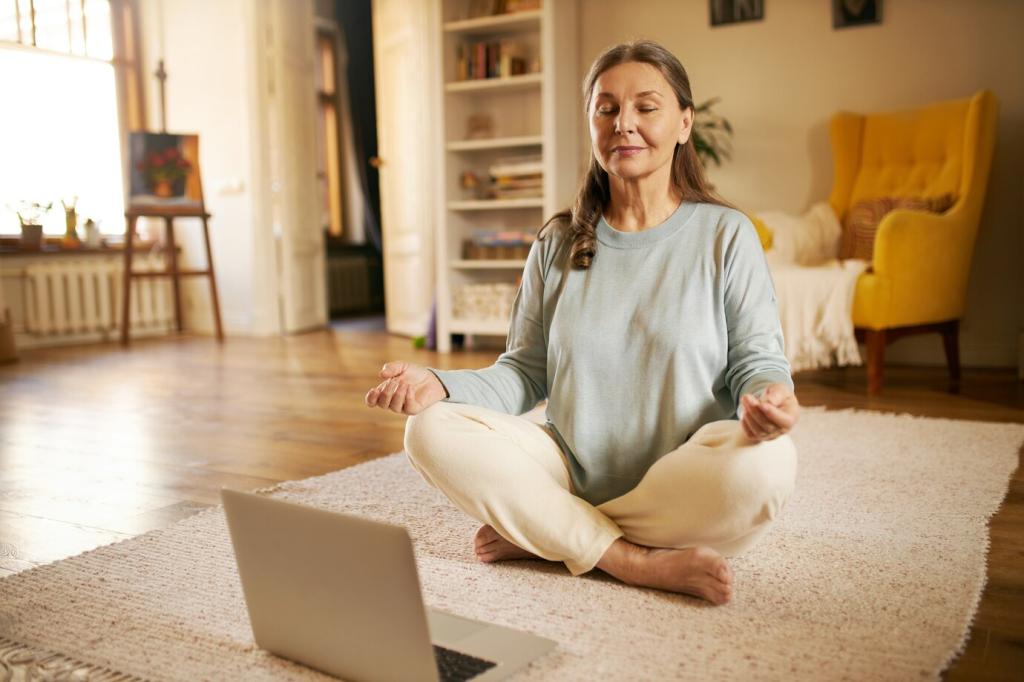
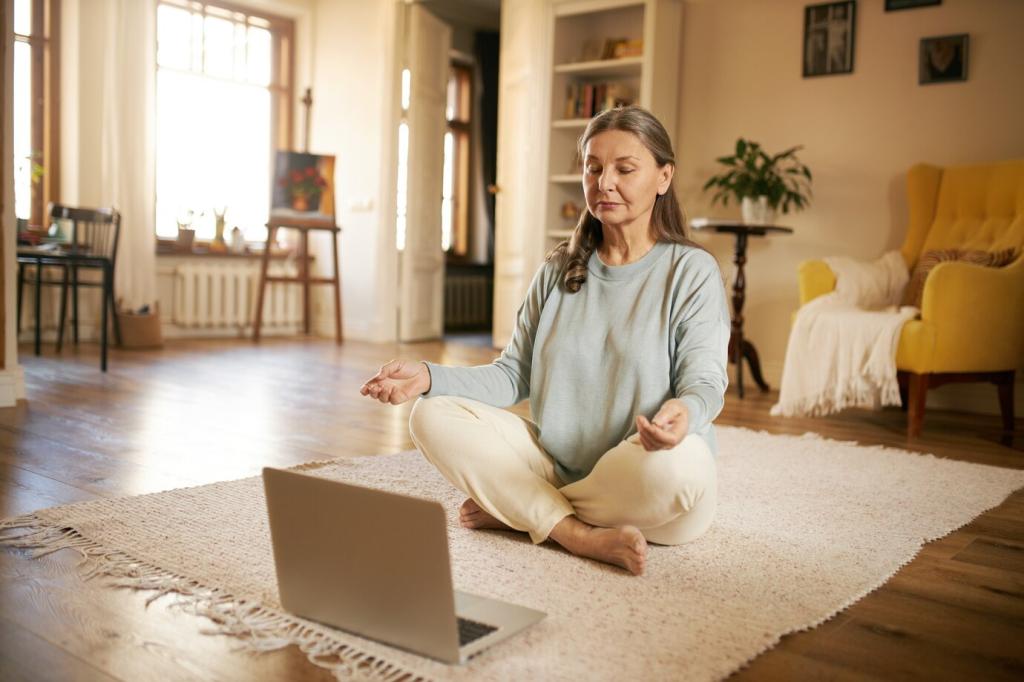
Common Beginner Mistakes (and Gentle Fixes)
Overstretching leads to cranky joints and sore hamstrings. Seek a clear, breathable sensation rather than maximum depth. Use props to shorten the distance to the floor, and bend your knees in forward folds. Aim for slow, sustainable progress. Tell us which prop changed a pose for you—blocks, books, or a chair.
Common Beginner Mistakes (and Gentle Fixes)
In challenging moments, the breath often disappears. Choose a pace that allows smooth nasal breathing throughout each pose. Count inhales and exhales, or whisper a gentle cue like “soften.” If breath turns choppy, reduce depth or duration. Breathing is your safety line—keep it visible and reliable from start to finish.
Real Benefits, Real Stories
Slow, regular breathing activates the parasympathetic nervous system, lowering arousal and easing tension. After two weeks of short sessions, many beginners report clearer concentration and fewer emotional spikes. Try five calm breaths before emails and five after practice. Comment with one moment today that felt noticeably quieter inside.


Real Benefits, Real Stories
Light evening stretches, like Reclined Twist and Legs Up the Wall, support better sleep by calming the nervous system. Morning mobility boosts circulation without jolting the body. Over time, steadier sleep and kinder mornings reshape mood. Track your sleep for a week and share what changes with even tiny consistency.
